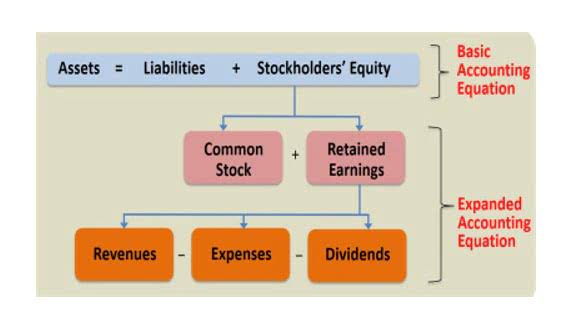
This method is particularly useful for companies dealing with rapidly changing markets and fluctuating demand, as it takes into account the current market value of inventory. Incorrect NRV estimation can significantly affect the financial statements, leading to inventory and receivables overvaluation or undervaluation. This can affect profitability, asset valuation, and critical financial KPIs, potentially misleading stakeholders. Customer creditworthiness is a crucial factor, with customers with poor credit histories or financial difficulties more likely to default and increase the allowance. Net realizable value can also refer to the aggregate retained earnings total of the ending balances in the trade accounts receivable account and the offsetting allowance for doubtful accounts.
- There are many official regulations that businesses must adhere to when it comes to accounting reporting.
- Gathering as much information as possible about what similar assets are selling for will be crucial to forming a reliable basis for the expected selling price.
- It ensures the accuracy and reliability of financial statements by preventing the overstatement of asset values.
- The estimated selling price of something in the regular course of business, less the completion, selling, and shipping costs, is known as the net realizable value.
- It helps in determining the true value of inventory, guiding pricing strategies, and ensuring compliance with accounting standards.
- Net realizable value can also refer to the aggregate total of the ending balances in the trade accounts receivable account and the offsetting allowance for doubtful accounts.
Formula
Essentially, NRV provides a safeguard ensuring that inventories are reported at values which are never more than the expected revenues less the estimated costs of completion and disposal. The Percentage of Sales method multiplies your credit sales for the period by an estimated percentage of uncollectible accounts based on historical experience and current economic conditions. Determining the expected selling price, estimating completion and disposal costs, and assessing obsolete or slow-moving inventory valuation can be complex and uncertain. This helps businesses determine the net amount they can expect to receive from selling an asset after accounting for any additional costs involved in the sale. NRV is the valuation method which is adopted by the firms to ensure they price the assets properly.

What Is The Net Realizable Value Formula?

By calculating NRV, businesses can prevent overvaluation of assets and provide a truthful representation of their financial health. This helps stakeholders make informed decisions and maintain trust in the company’s financial reporting. Net realizable value (NRV) is a method used to determine the actual value of an asset when sold, after deducting any costs involved in the sale. This ensures that businesses have a realistic view of their financial standing.

AccountingTools

By leveraging tools like a record to report suite, companies can more efficiently keep a pulse on these economic indicators, allowing for real-time adjustments to accounting reports and better anticipation of shifts in NRV. When you set out to determine the expected selling price for an asset, you’re effectively gauging its market value—the price that buyers are willing to pay under normal business conditions. It’s vital to capture a realistic figure that is neither too optimistic nor too pessimistic, aligning with the conservatism principle in accounting, which prefers understated assets and revenues over the overstatement. This figure is closely tied to the net realizable value method, however, the disadvantages include reliance on assumptions about future sales, which can be speculative. The Lower Cost and Market Method is a straightforward approach that helps businesses avoid overvaluing their inventory. By comparing the original cost to the current market value, companies can ensure their financial statements accurately reflect their inventory’s worth.
- In some cases, the Cash Net Realizable Value of an asset may be lower than its book value, which can have significant implications for a business’s financial statements and decision-making processes.
- The Gross Profit Margin (GPM) method calculates inventory value by subtracting the cost of goods sold from total revenue, then dividing that figure by total revenue.
- Companies must manage to stay connected with present technology to reach consumers.
- Determining the expected selling price involves forecasting future market conditions, which can be uncertain due to changes in consumer demand, economic conditions, competition, or technological advancements.
- Net realizable value (NRV) is the amount by which the estimated selling price of an asset exceeds the sum of any additional costs expected to be incurred on the sale of the asset.
Net realizable value plays a net realizable value vital role in inventory valuation as it ensures that assets are not overstated on financial statements. For creators, particularly those who produce tangible goods, NRV helps determine how much inventory should be reported. If the estimated selling price of an item drops below its cost, it may need to be written down, affecting overall profitability. Net realizable value calculations are a simple yet incredibly effective way to determine your potential losses when selling inventory or offering credit to customers and clients.
What can Net Realizable Value tell you about your business?
The first step of the process is determining your asset’s fair market value (FMV). According to the notion of lesser cost or net realizable value, inventory should be recorded at the lower of its cost or the price at which it can be sold. The estimated selling price of something in the regular course of business, less the completion, selling, and shipping costs, is known as the net realizable value. However, the net realizable value is also applicable Bookkeeping for Painters to accounts receivables. For the accounts receivable, we use the allowance for doubtful accounts instead of the total production and selling costs.
